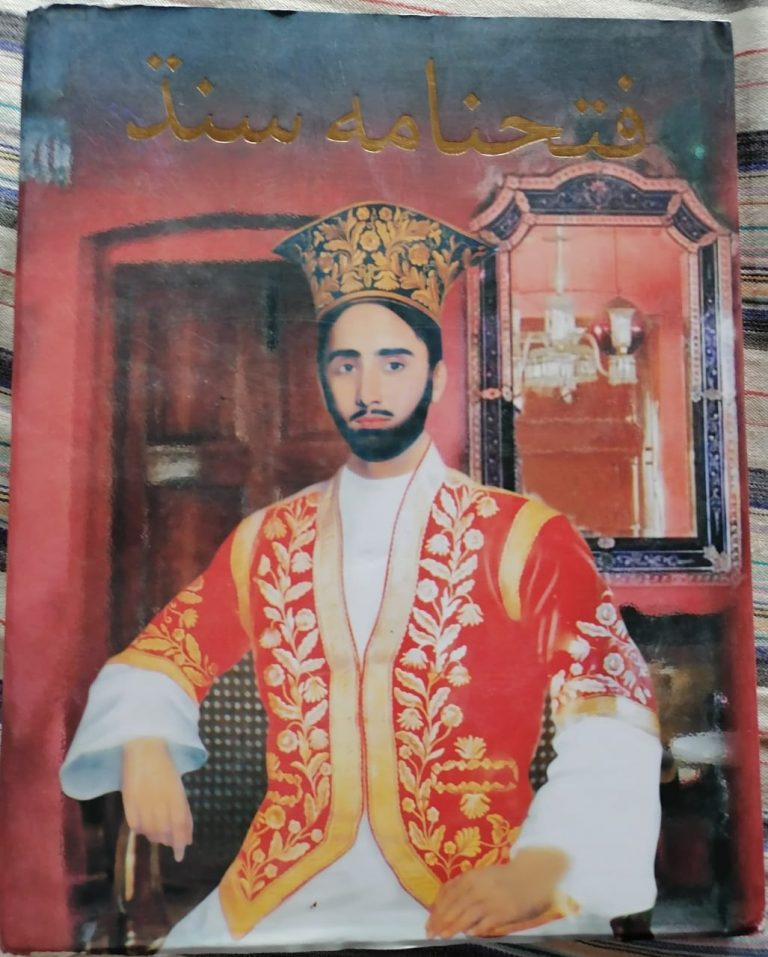
Mir Hassan Ali had composed his poetry in Arabic, Persian, Urdu and Sindhi languages. There are 16 books on his credit and some of them are published and some are yet in form of manuscripts.
By Noor Ahmed Janjhi
It is great tragedy of the history that defeat of the one party is called the victory of another party because there is illusion of understanding so people understand things through the differences of things. Actually the differences reflect the diversity of universe on one hand and the limitations of human understanding and perception on the other. Despite the progressing understanding, man has tried to document the happenings and memories. Fatehnama composed by Mir Hassan Ali Khan Talpur (b.12 July 1825, d. 30 January 1907) is a good account of Kalhora -Talpur relations and the rise of Talpur Emirate of Sindh. Another book with the same name was composed in Persian by Mir Azimuddin Thattavi under the patronage of Mir Fateh Ali Khan (Tareekh Sindh-Kalhora Daor by Ghullam Rasool Mahar p 40). The book is written on the style of Shahnama of Firdusi.
Fatehnama by Mir Hassan Ali presents a detailed account of Kalhora-Talpur relations and the rise of Talpurs as the rulers of Sindh. Before going to discuss the details of the book, let us take a look of the life of Mir Hassan Ali Khan Hassan Talpur. He was the eldest son Mir Naseer Khan Talpur, the Last Talpur Amir of Sindh. He was taught at home by an Iranian teacher and Akhund Ahmed Halai. He was so intelligent and brilliant in his early age that he memorized Quran Sharif t at the age of 10 years. After the annexation of Sindh, he was taken with other Talpur Amirs, as prisoner of war. At that time he was a young man of 18 years and returned from there in the last of all in 1863. He was married with the daughter of his uncle Mir Noor Muhammad Talpur and died without any issue on 30 January 1907 at the age of 85 years. Firstly he was buried as the amanat in the courtyard of the bungalow but afterwards his dead body was taken to Karbala and was buried there on 9 May 1912. He had been remained sad and in pensive mood after returning from Calcutta and it moved him to compose poetry. He had composed poetry on the tragedy of Karbala also. Persian was the official language during Talpur period and the poets of the court had composed poetry in the language. Mir Hassan Ali had composed his poetry in Arabic, Persian, Urdu and Sindhi languages. There are 16 books on his credit and some of them are published and some are yet in form of manuscripts. This poetic composition was also published in 1938 and 1952 but it was incomplete. Now it has been published completely in 2021 by Mir Murad Ali Talpur Publication. Mirza Safdar Saifi has contributed a great in the publication of this great Mathnavi.
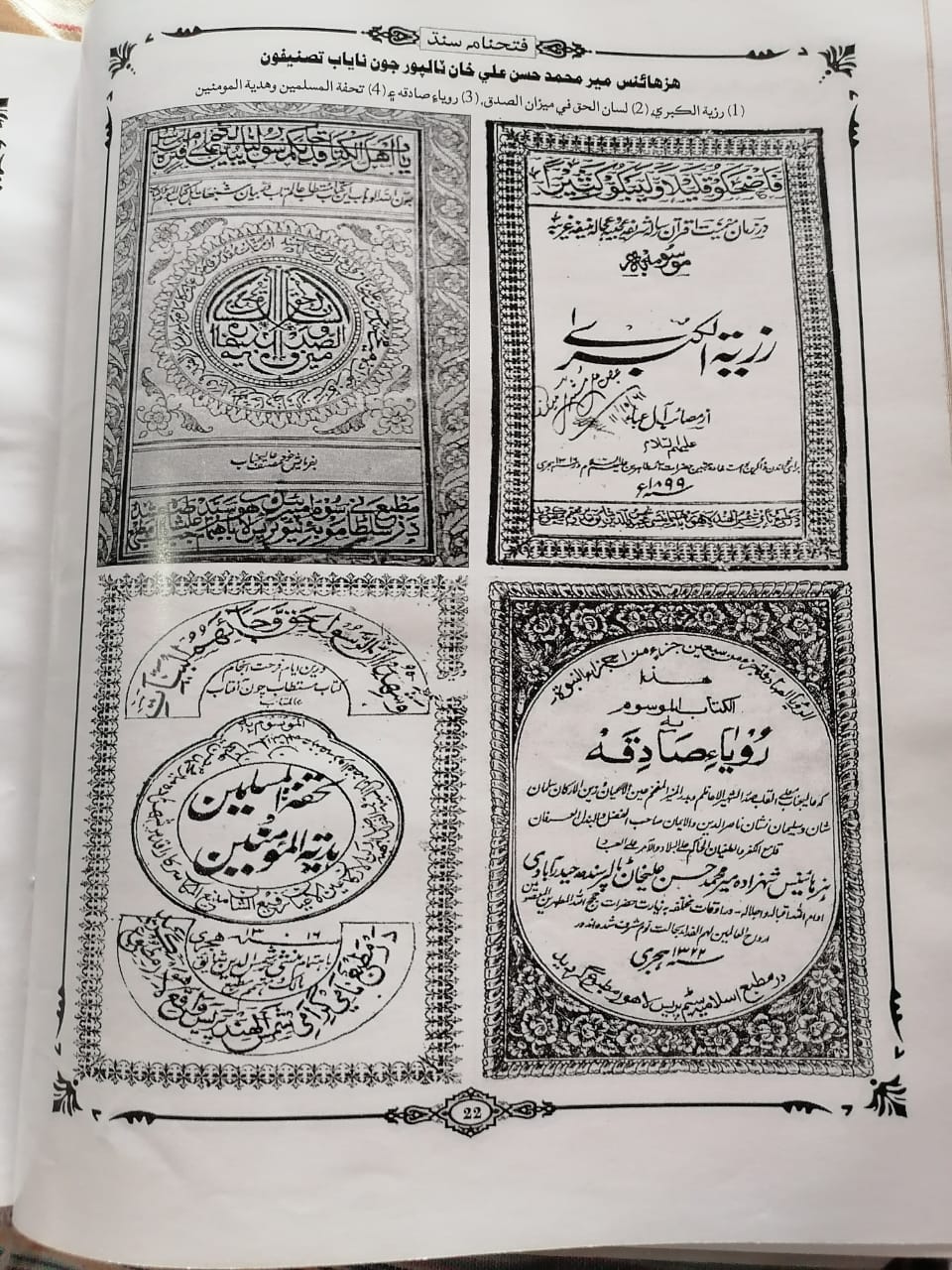
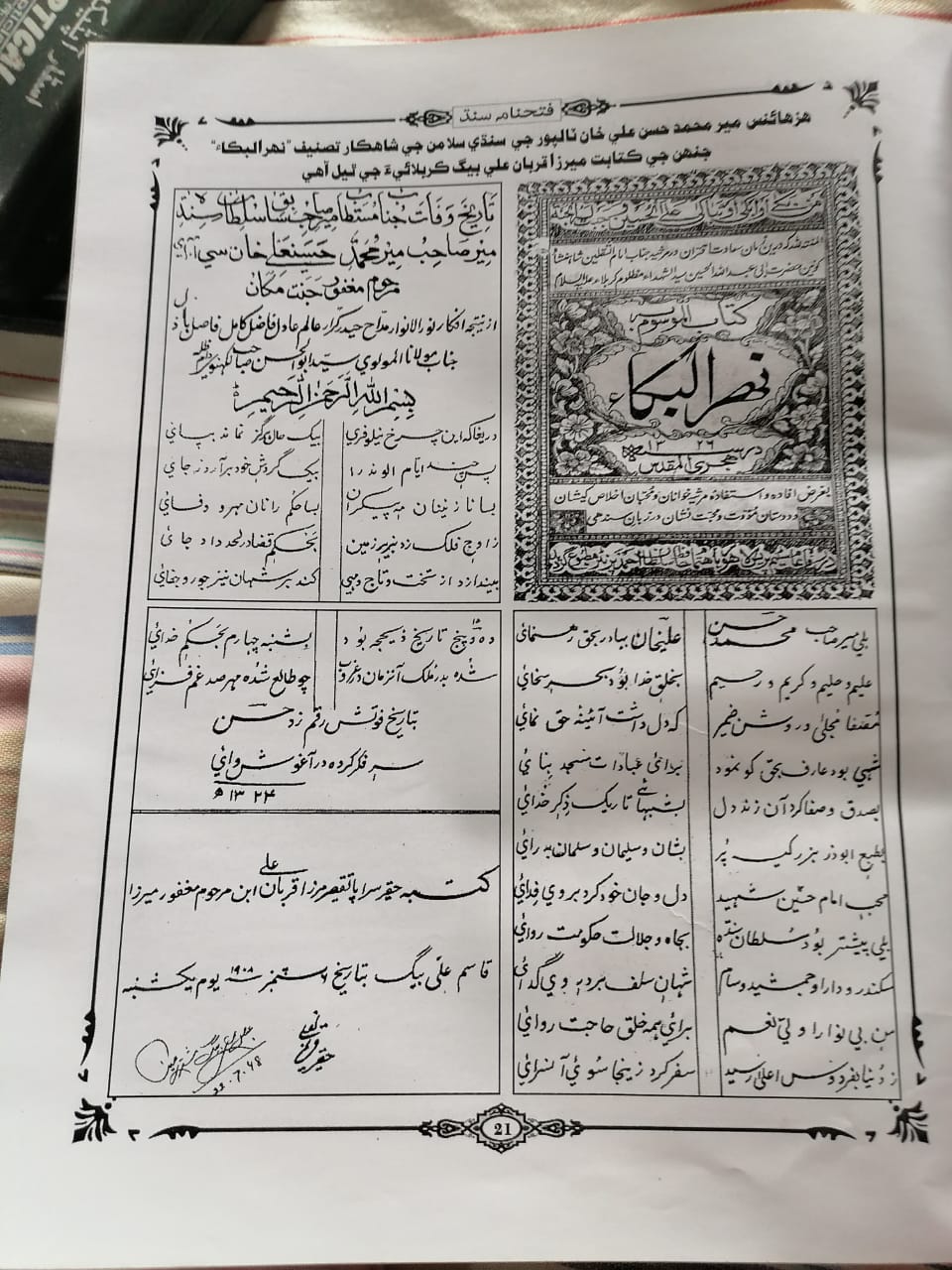 The main content of the book starts with the praise of Allah saeen and the praise for Holy Prophet (Peace be upon him) and ahle bait. There is a description of the creation of the sun, moon, stars and also the reason behind composition of the book. There are total 130 topics concluding on the death of Mir Karam Ali Khan Talpur. Mir Hassan Ali Khan elaborates the reason behind the book as ‘to present the history in Sindhi language so as everyone may understand it’. He says:
The main content of the book starts with the praise of Allah saeen and the praise for Holy Prophet (Peace be upon him) and ahle bait. There is a description of the creation of the sun, moon, stars and also the reason behind composition of the book. There are total 130 topics concluding on the death of Mir Karam Ali Khan Talpur. Mir Hassan Ali Khan elaborates the reason behind the book as ‘to present the history in Sindhi language so as everyone may understand it’. He says:
۽ جوڙيم هي سنڌي زبان ۾ تمام
ته سمجهي سگهي هرڪوئي خاص عام
سو دنيا ۾ رهندو به پايانِ ڪار
مگر نيڪ و بد رهندا انجام ڪار
جي رهندو ته ته رهندو سخن يادگار
سُخن تي ٿيو عالم سڄي جو مدار
And I composed it in Sindhi language, so as everyone may understand it
The word will sustain in world, but good and bad will be concluded at the end.
The memorial word will be retained as there the world depends on the word.
After it he starts with the events that caused the rise of Talpur Emirate in Sindh and fall of Kalhora rule. The first major happening in this regard, as he narrates, was the blatant murder of Mir Bahram on the instigation of Rajo Lekhi and many following incidents. The murder of Mir Bahram Khan and his son Mir Sobdar made angry to Talpurs and their allies. The gathered themselves and attacked on the fort at Khudabad and consequent flight by Mian Sarfaraz Kalhoro and his replacement with Muhammad Aba Khan and after six months Mian Ghullam Nabi. It followed the Battle of Lanyari, a place near Shahdadpur, the murder of Mian Ghullam Nabi and Feroz Pitafi and defeat to the Kalhora troops. The poet also mentions the account of Azimuddin Thattavi; the murder of Mian Sarfaraz and succession of Mian Abdul Nabi by Mir Bijar Khan in spite of the negation by former’s mother; the rebellion by Mian Izat Yar Khan and Timur after the former’s defeat; king Timur returned after successful negotiation and payment of tribute and murder of Mir Bijar Khan by two Rathor emissaries belonging to the court of Raja Bijaisingh of Jodhpur. The poet, like the other historians mention the consequent transfer of the Umerkot Fort to Raja of Jodhpur by Mian Abdul Nabi. Again the Baloches gathered and Mian Abdul Nabi fled away and he requested to Kalat and Jodhpur to attack on Sindh. Replacement of Mian Abdul Nabi with Mian Sadiq Ali Khan who led the armay under the command of Mir Abdullah son of Mir Bijar Khan to stop the Jodhpur troops. Resultantly the Jodhpur troops were pushed back and the news made Mian Abdul Nabi fainted. Again the Sindh troops faced Kalat troops at Chalak Bridge near Larkano and defeated them. Mian Zarak, the commander in chief of Kalat forces was murdered in the fight and Mian Abdul Nabi approached Timur Shah who sent Madad Khan in support of Mian Abdul Nabi. Madad Khan ravaged Sindh. Talpurs reacted to his arrival and made consultations. Majority was in favor of fight but Mir Fateh Khan of Mirpurkhas showed difference of opinion. It made Talpur forces in schism. Arrest of Mir Fateh Khan and Mir Bago by Madad Khan and then escape from it has been narrated. After it Madad Khan went away leaving behind Mian Abdul Nabi helpless and away from power; mediation by Daudpota of Bahawalpur and reconciliation between Talpurs and Mian Abdul Nabi on the Holy Quran; arrest of Mir Abdullah and Mir Fateh Khan followed by their murder. In this way the series of events has been elaborated by Mir Hassan Ali Khan Hassan Talpur. Mostly the account is in compatibility with the contemporary history accounts. However, the tone and tenor of the Mathnavi can be said bitter at some points as the poet belongs to the royal family of Talpur Amirs and it is natural to express in this way.
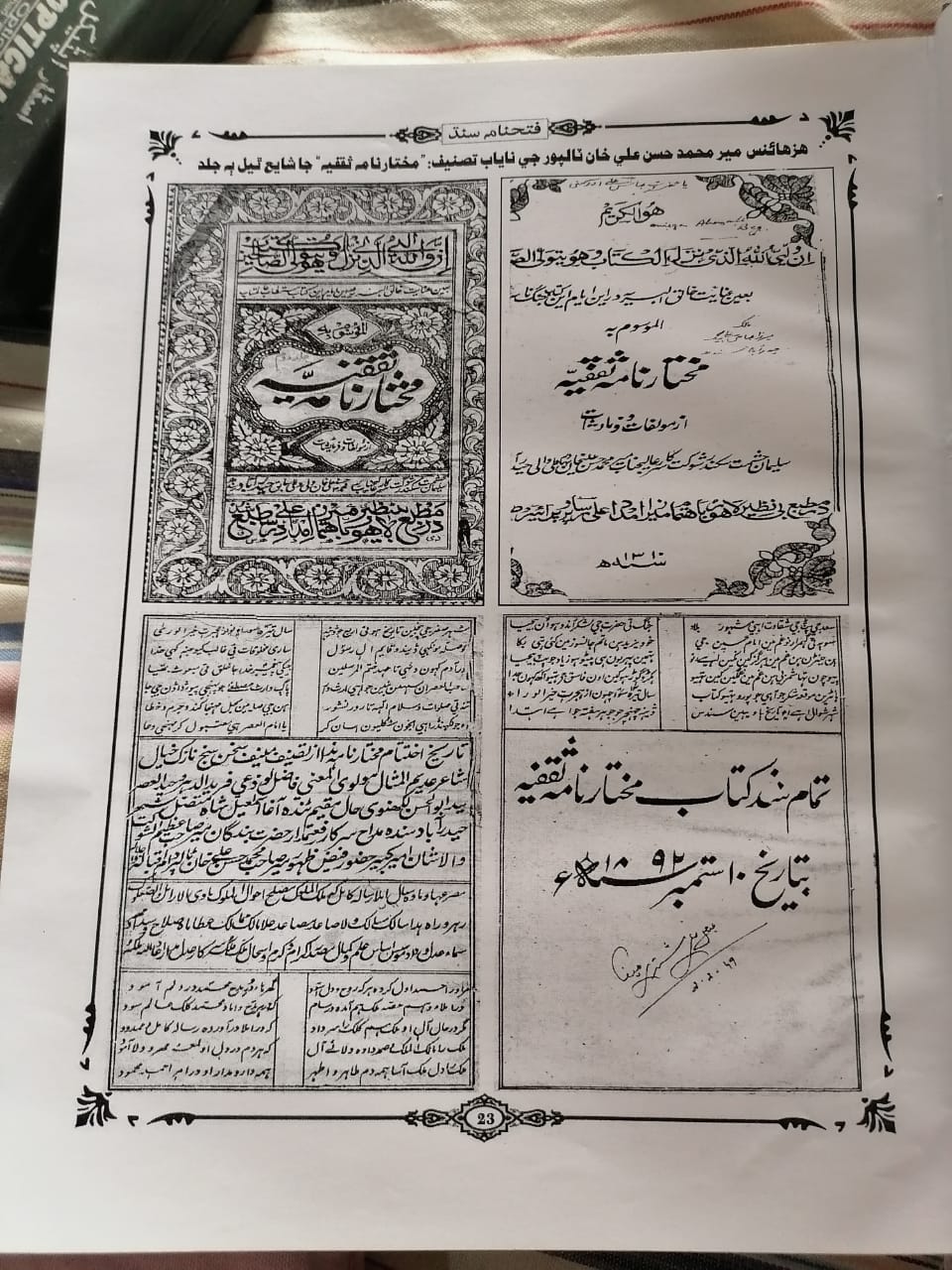
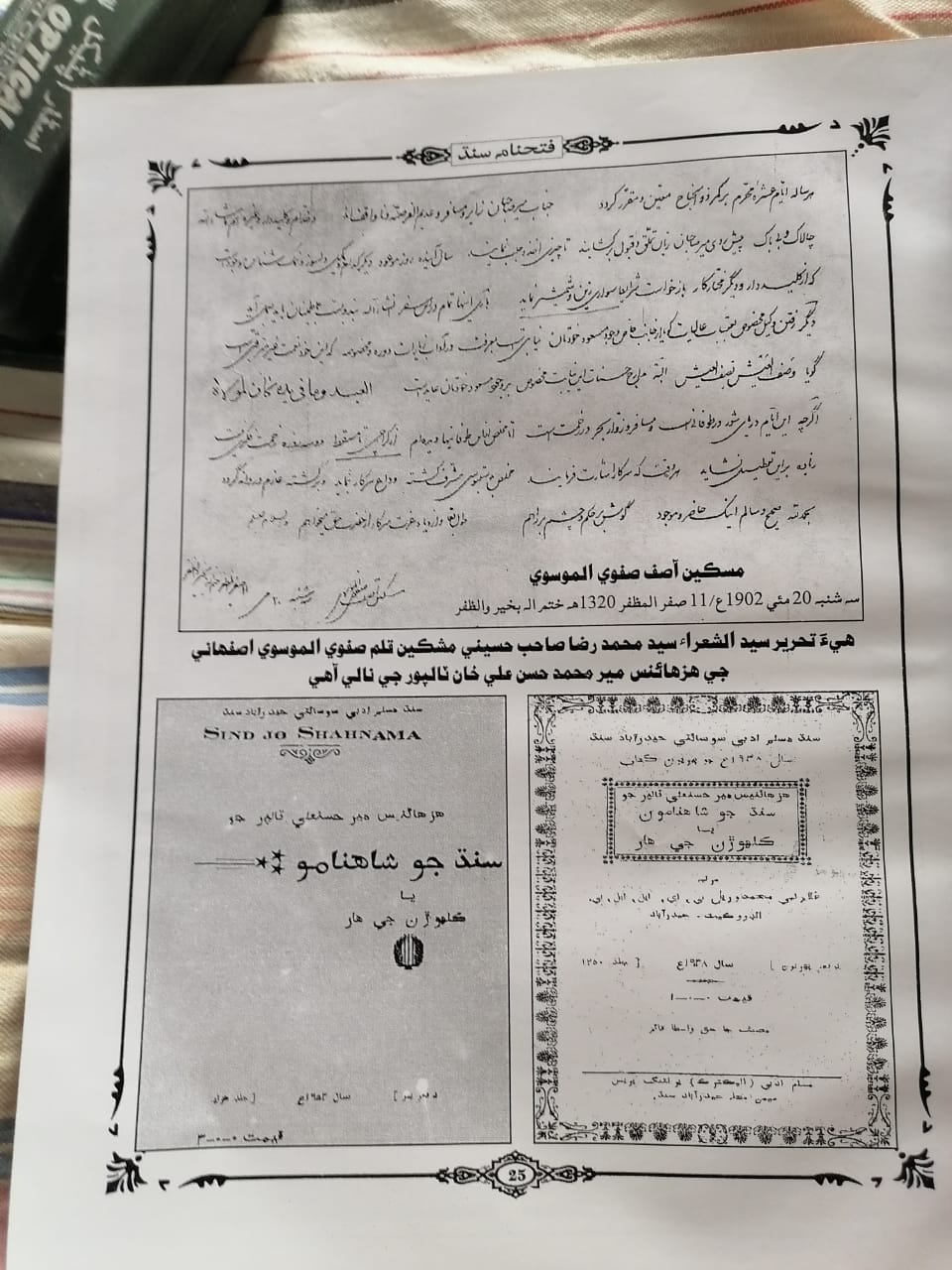 The great characteristic of this account in form of Mathnavi is that it contains hundreds of names who had been actively part of the power during both of the dynasties. It also represents the events in sequence with the reference of Azimuddin Thattavi. It elaborates the events of Talpur period too. For example, the Battle of Wahnai between the troops of Hyderabad and Mirpurkhas; Battle with Daudpota, Arrival of Shujaul Malik and Azeem Khan of Afghanistan, Regaining the Umerkot Fort from Jodhpur and construction of Ranikot with the cost of 17 lacs. All the sub topics of the mathnavi are worth to be analysed in the light of historical narratives. The mathnavi describes the very behavior of people associated with the power and their struggle to hold the power tightly at any cost. Neither power remains with them forever, nor they remain themselves in power. It is a great lesson for all the people involved in power as well as aspiring for power as the entire culture of power contains usury, exploitation, deception and bloodshed. Famous English poet, Thomas Gray has rightly said:
The great characteristic of this account in form of Mathnavi is that it contains hundreds of names who had been actively part of the power during both of the dynasties. It also represents the events in sequence with the reference of Azimuddin Thattavi. It elaborates the events of Talpur period too. For example, the Battle of Wahnai between the troops of Hyderabad and Mirpurkhas; Battle with Daudpota, Arrival of Shujaul Malik and Azeem Khan of Afghanistan, Regaining the Umerkot Fort from Jodhpur and construction of Ranikot with the cost of 17 lacs. All the sub topics of the mathnavi are worth to be analysed in the light of historical narratives. The mathnavi describes the very behavior of people associated with the power and their struggle to hold the power tightly at any cost. Neither power remains with them forever, nor they remain themselves in power. It is a great lesson for all the people involved in power as well as aspiring for power as the entire culture of power contains usury, exploitation, deception and bloodshed. Famous English poet, Thomas Gray has rightly said:
The boast of heraldry, the pomp of power,
And all that beauty, all that wealth ever gave,
Awaits alike the inevitable hour
The paths of glory lead but to the grave!
[author title=”Noor Ahmed Janjhi ” image=”https://sindhcourier.com/wp-content/uploads/2021/05/Noor-Ahmed-Janjhi-Sindh-Courier.jpg”]Noor Ahmed Janjhi is a senior educationist based in Desert District Tharparkar Sindh. He is author of several books in Sindhi and English on folk literature including two poetry books.[/author]